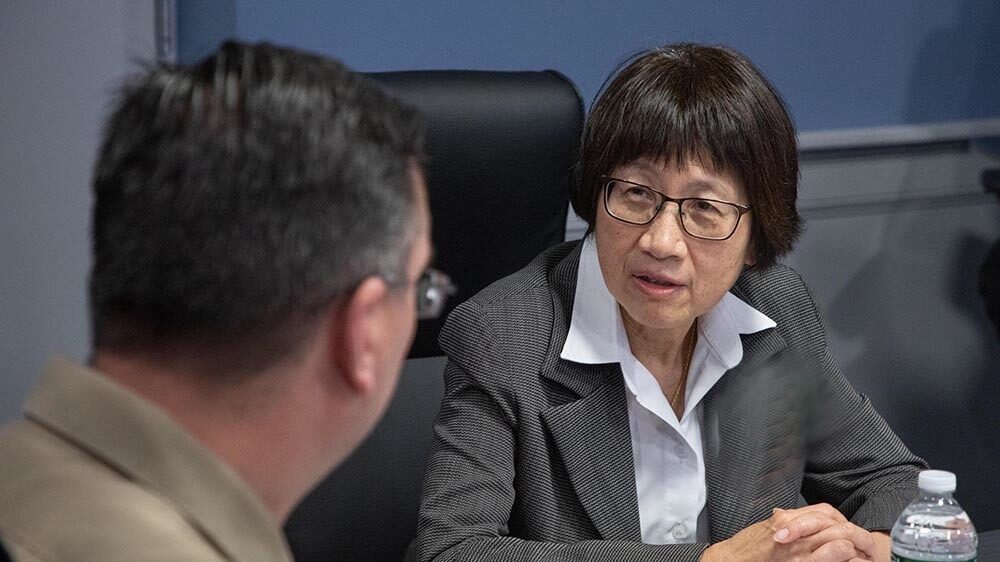
Under Secretary of Defense for Research and Engineering Heidi Shyu (right) asks a question to Naval Undersea Warfare Center Division Newport Commanding Officer Capt. Chad Hennings during a briefing held at Division Newport on June 21, 2022. (Photo by Richard Allen)
WASHINGTON — With the Pentagon’s new science and technology strategy, the US will “step away” from “conventionally thinking” that the Defense Department by itself is responsible for developing defense-relevant technologies, and rather it will require collaboration with international partners and allies, according to a senior official.
“We know we cannot invest in or develop technology alone,” Nina Kollars, advisor to Heidi Shyu, under secretary of defense for research and engineering, told reporters on Monday ahead of the strategy’s formal release today. “The plan embraces and expands on teamwork, co-development, co-research and then building the foundation to keep the innovation ecosystem vibrant and relevant.”
The plan, published today, puts to paper themes emphasized by Shyu repeatedly over the past several months: It lays out three lines of efforts – accelerating the development of joint warfighting capabilities, fielding capabilities at speed and scale, and ensuring the foundations for research and development through workforce development and upgrading physical and digital infrastructure.
The strategy says DoD aims to strengthen its international collaboration through initiatives like the NATO Science and Technology Organization, AUKUS, the Five Eyes intelligence sharing relationship and new initiatives like the NATO Defense Innovation Accelerator for the North Atlantic.
“The DoD will look to expand on these bilateral and multilateral engagements to create new science and technology partnerships with countries that share our values, that innovate to create new technologies, and that are committed to protecting technologies from competitors who seek to erode our advantages,” according to the strategy.
Beyond increased collaboration with international allies and partners, the strategy says that DoD needs to be more proactive in engaging with the private sector in order to make the right investments in emerging technologies. That’s been a major focus for Shyu, who has been spearheading efforts aimed at making it easier for more companies to do work with DoD.
Two of those efforts, the Rapid Defense Experimentation Reserve and the Accelerate the Procurement and Fielding of Innovative Technologies programs, aim to bridge the “valley of death” where promising technologies fail to shift from the lab into actual operations.
“The DoD will accelerate the process of turning ideas into capabilities by creating new pathways to rapidly experiment with asymmetric capabilities and deliver new technologies at scale,” according to the strategy. “Doing so requires that we bridge the valley of death between prototypes and full-scale production.”
DoD plans to bridge that valley with new acquisition and sustainment processes, which will require close alignment within the department and industry and warfighters, the strategy says. As part of the push to advance joint solutions, DoD will develop new processes to “more closely connect members of this innovation ecosystem to each other,” increase investments into small businesses and create new investment pathways to fill technology gaps.
“I would note… that what is particularly important to the building at this point is ensuring that we have the investments in modeling and simulation, rigorous analysis,” Kollars said. “All of those elements really we think will help us identify what it is exactly we should be getting after in terms of budgetary investments, which then necessarily make it easier to prototype, experiment and transition” tech to the field.
An implementation plan will be delivered to Congress within 90 days, she added.








